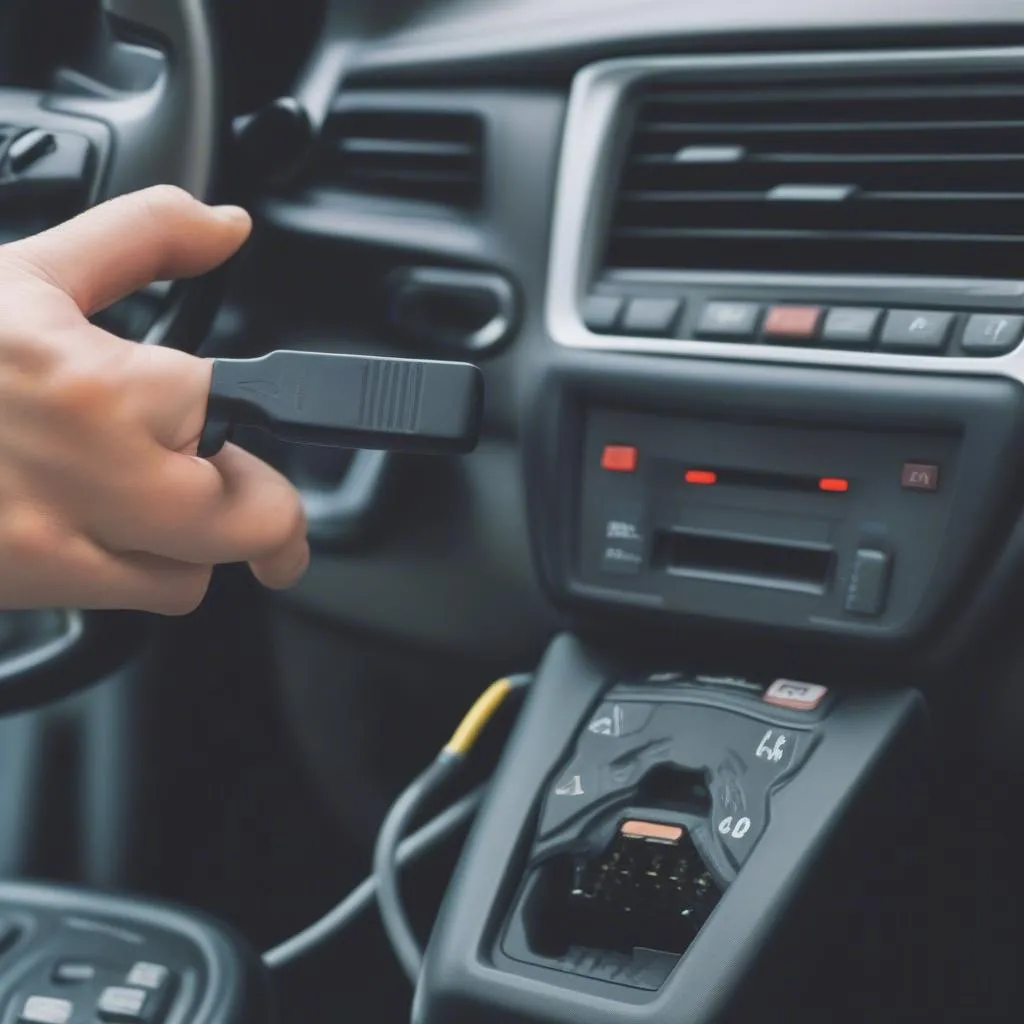You’re driving your BMW, and suddenly a warning light appears on your dashboard: “brake pads worn.” What does it mean, and what should you do? This comprehensive guide covers everything you need to know about the BMW brake pad wear warning, from understanding its causes to outlining the solutions.
Understanding the BMW Brake Pad Wear Warning Light
The brake pad wear warning light is a crucial safety feature in your BMW. It signals that your brake pads have worn down to a point where they need replacement. Ignoring this warning can lead to serious safety hazards, including:
- Reduced braking efficiency: Worn brake pads provide less friction, significantly increasing your stopping distance.
- Damage to brake rotors: Driving with worn brake pads can damage the brake rotors, leading to costly repairs.
- Complete brake failure: In extreme cases, ignoring the warning can result in complete brake failure, putting you and others at risk.
What Causes the BMW Brake Pad Wear Warning?
The most common cause for the warning light is worn brake pads. BMWs are equipped with brake pad wear sensors, small metal tabs that contact the brake rotor when the pads wear down to a certain level. This contact triggers the warning light on your dashboard. However, other factors can also trigger the warning, such as:
- Faulty brake pad wear sensor: The sensor itself could be damaged or malfunctioning, causing a false warning.
- Wiring issues: Damaged or corroded wires connecting the sensor to the dashboard can disrupt the signal.
- Issues with the brake fluid: Low brake fluid levels or air in the brake lines can affect brake pressure and trigger the warning light.
How to Address the BMW Brake Pad Worn Warning
Seeing the brake pad wear warning light doesn’t necessarily mean immediate danger, but it requires immediate attention. Here’s a step-by-step guide:
- Check Your Brake Pads: If you’re comfortable with basic car maintenance, visually inspect your brake pads. If they appear thin (less than ¼ inch of friction material), it’s time for a replacement.
- Visit a Qualified Mechanic: For a thorough inspection and accurate diagnosis, take your BMW to a qualified mechanic specializing in BMWs. They can identify the root cause of the warning and recommend the appropriate course of action.
- Brake Pad Replacement: If the brake pads are worn, replace them immediately. It’s recommended to replace all four brake pads simultaneously, even if only one axle shows wear.
- Sensor Replacement: While replacing the brake pads, it’s advisable to replace the brake pad wear sensors as well, especially if they are nearing the end of their lifespan.
- Address Other Issues: If the mechanic identifies other problems, such as faulty sensors, wiring issues, or brake fluid issues, address them promptly to restore your BMW’s braking system to its optimal condition.
Can I Still Drive My BMW with the Warning Light On?
While you technically can drive a short distance with the brake pad wear warning light on, it’s highly discouraged. Driving with worn brake pads compromises your safety and risks further damage to your BMW’s braking system.
Cost of BMW Brake Pad Replacement
The cost of brake pad replacement for a BMW can vary depending on several factors:
- BMW Model: Different BMW models have different brake pad specifications and costs.
- Type of Brake Pads: OEM (Original Equipment Manufacturer) brake pads are generally more expensive than aftermarket options.
- Labor Costs: Labor costs can vary depending on the mechanic’s location and hourly rates.
On average, you can expect to pay between $300 to $800 for a complete brake pad replacement on a BMW, including parts and labor.
Tips to Extend the Life of Your BMW Brake Pads
- Avoid Hard Braking: Anticipate traffic flow and coast to a stop whenever possible.
- Lighten Your Load: Carrying excessive weight in your BMW puts more strain on the braking system.
- Maintain Proper Tire Pressure: Incorrect tire pressure can lead to uneven brake pad wear.
- Regular Brake Inspections: Schedule regular brake inspections as part of your BMW’s maintenance routine.
Conclusion
The BMW brake pad worn warning light is a crucial safety feature you should never ignore. Addressing the issue promptly ensures your safety and protects your investment in your BMW. By understanding the causes of the warning light and following the recommended steps for resolution, you can enjoy many miles of safe and worry-free driving.
FAQs
1. How often should I replace my BMW brake pads?
There’s no fixed schedule for brake pad replacement. It depends on your driving style and conditions. However, it’s a good rule of thumb to have them inspected every 10,000 miles or during your regular BMW service.
2. Can I replace my BMW brake pads myself?
Replacing brake pads requires mechanical expertise. If you’re not comfortable working on your vehicle, it’s best left to the professionals.
3. What happens if I ignore the brake pad wear warning light?
Ignoring the warning can lead to reduced braking efficiency, damaged brake rotors, and even complete brake failure, putting you at risk.
4. Are aftermarket brake pads as good as OEM brake pads for my BMW?
While aftermarket brake pads can be more affordable, OEM brake pads are specifically designed and tested for your BMW model, often offering better performance and longevity.
5. What other warning lights should I be aware of on my BMW dashboard?
bmw x1 brake pad warning light reset
bmw brake lining warning light
bmw 323i brake warning light
Familiarize yourself with the warning lights outlined in your BMW’s owner’s manual to understand their meanings and take appropriate action when necessary. Remember, a well-maintained BMW is a safer BMW.


